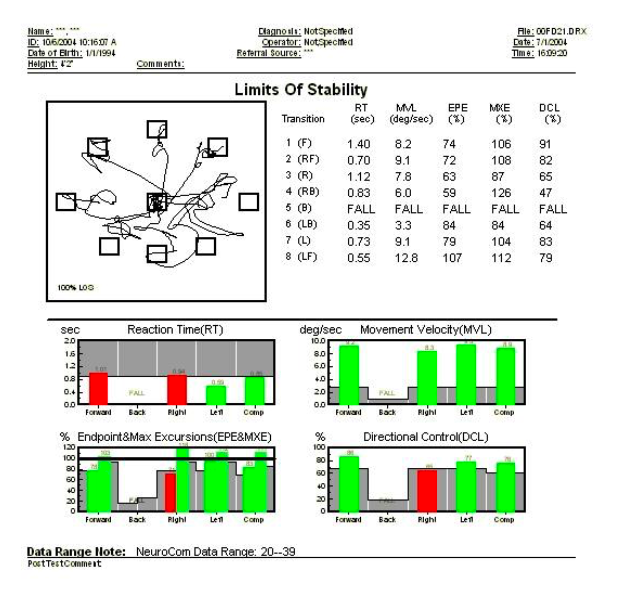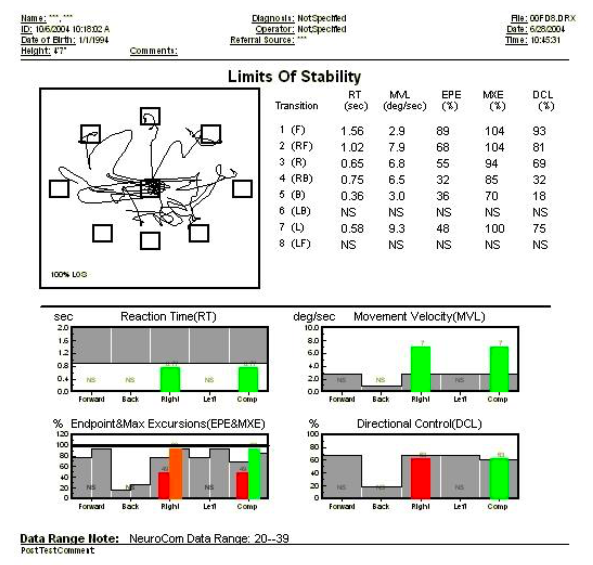
Helping Children Maximize Their “ABC” (Athletic, Behavioral & Cognitive) Abilities
Examples of Case Studies & Data Charts (2004 - 2022)
Candace S. Meyer, M.S. - CEO & Founder
Difficulties facing the 21st Century Student
Video: Candace Meyer talking about the NASA Connection
Toe walking
Scared to try new things
Clumsy
Hyper - can’t stop moving
Hard to make transitions
Scared of the dark
Frustrations at school and/or home
Loud talking
Sensitivity to loud noises
Easily distracted
Acting out socially
Frequent meltdowns
Tendency to whine
Trouble eating, sleeping or going to the bathroom
Clinical Balance Measurements - Computerized Posturography Platform
Originally developed for NASA to:
Measure balance and vestibular function in astronauts
Now largely used worldwide in research clinical and performance facilities focused on healthcare
Minds-In-Motion is one of three in the world to utilize in regards to educational/ learning potential
“90% of brain energy goes into processing and maintaining the body’s relationship with gravity”
- Dr. Roger Sperry, Nobel Prize Winner
Clinical Data Charts
*Please note that students’ names have been removed to maintain anonymity
Limits of Stability (“LoS”) Data Report
Provide insight into “Space and Time” & Motor Planning by looking at:
Reaction time
Movement velocity
Endpoint and max excursions
Directional control
Examples: LoS Reports of High Performing students
Student #48
Student #67
Examples: LoS Reports of Struggling students
Student #03
Student #21
Case Study: Student #58 (5th Grade Boy)
Pre-”School Maze” Program
Described to be a good student but “unfocused”
Post- 2-Month “School Maze” Program
Improved visual processing skills, basal reading speeds were doubled!
Rhythmic Weight Shift (“RWS”) Data Report
Measures vestibular integration by:
Sensory Processing
Auditory Processing
Motor Integration
Examples: RWS Reports of High Performing students
Student #54
Student #58
Examples: RWS Reports of Struggling Students
Student #139
Student #21
Case Study: Student #529 (5th Grade Boy)
Pre-Center Based Program
“High Functioning” Asperger’s. Clumsy; “Bull in a China Shop”
Post 10-Week Center Based Program
Increased balance and spatial awareness. Reading level went from 5th to 10th grade (12.9+ 2 months after)
Case Study: Student #312 (4th Grader)
Pre-Center Based Program
Struggling in social skills and reading
Post 10-Week Center Based Program
Visual focus increased from 2% to 65%! Reading and social awareness improved greatly.
Clinical Testing for the Sensory Integration on Balance (“CTSIB”) Report
How well does the brain trust your muscles, eyes and inner ear?
Measures vestibular strength by taking measurements on/with:
Firm Platform (eyes open/ shut)
Foam Platform (eyes open/ shut)
Examples: CTSIB Reports of High Performing Students
Student #48
Student #67
Examples: CTSIB Reports of Struggling Students
Student #160
Student #47
Case Study: Student #588 (6th Grader)
Pre-Center Based Program
High performing student
Post-10 Week Center Based Program
Increased reading level 7.6 to 10.5. Visual processing and hand/eye coordination improved. Smiling more.
Case Study: Student #96 (Kindergarten Student)
Pre -"School Maze" Program
In Ocular lock (eyes NOT tracking). Struggling in everything!
Post - 2 Months of "School Maze" Program
Started eye tracking, began skipping (bilateral coordination) and started retaining academic information!
Case Study: Student #1369 (16 Year-Old Boy)
Pre-Center Based Program
Post-10 Week Center Based Program
Confidence & Reading Speed improved as Binocular Integration increased 71%! Eye-hand Coordination improved by 40%. Vestibular strength increased by 100%. Anxieties lessened.
More Case Studies…
Since 2004, Minds-In-Motion has captured 1700+ sets of data on children and adults.
To see more case studies and understand our approach and protocols better:
Enroll in one of our teacher/ parent trainings
Or contact us here





























